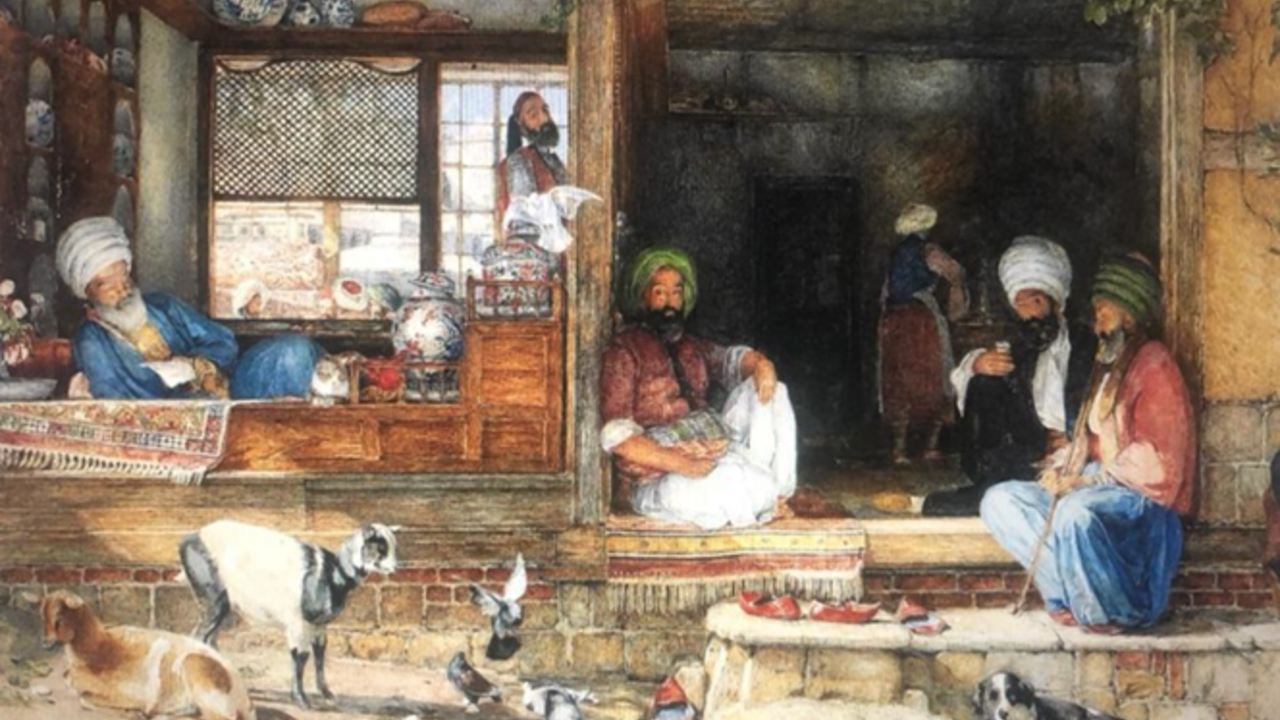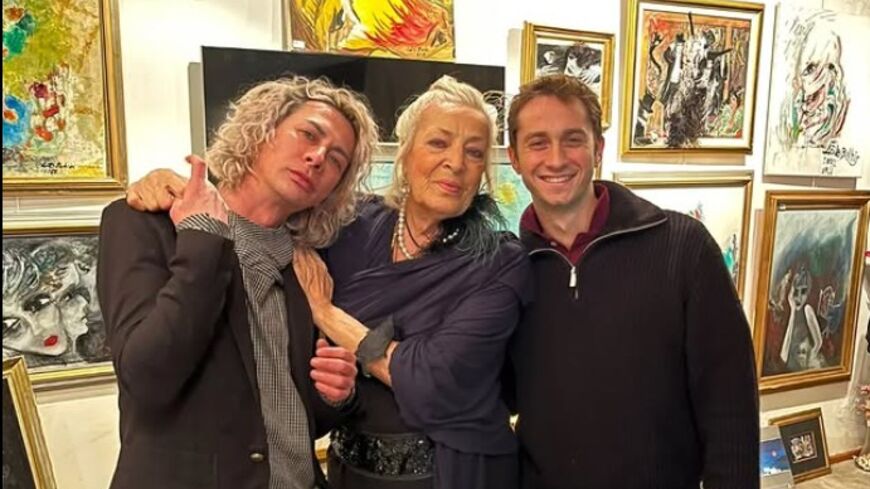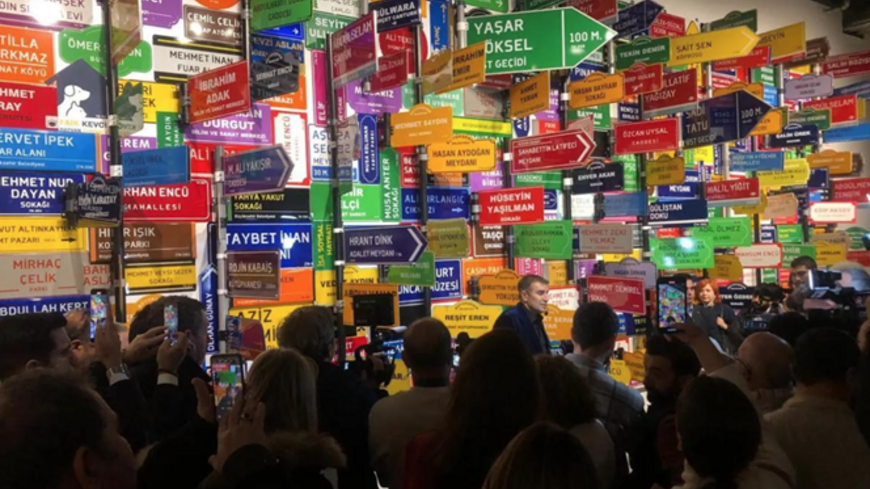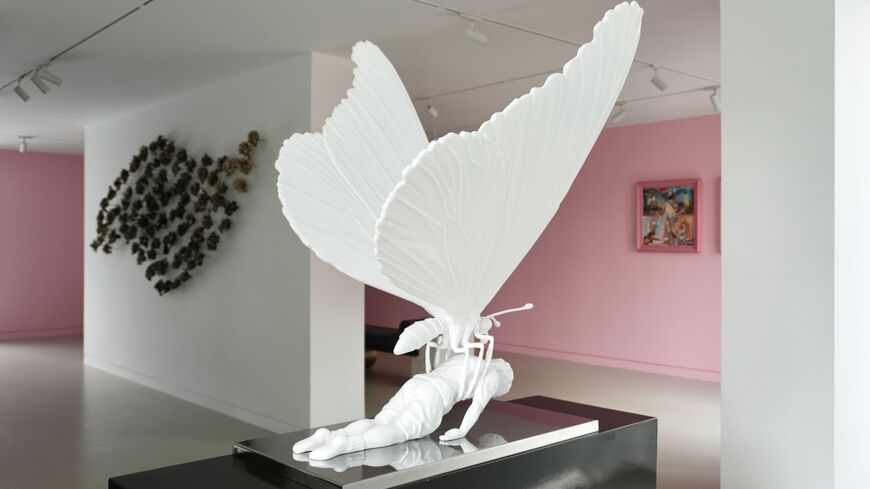AL-Monitor Istanbul: Mesher Gallery's love letter to the city
This week, we have a bit of everything — high culture, low expectations for romance, and plenty in between.

You're reading AL-Monitor City Pulse — Istanbul, a weekly exploration of Istanbul’s vibrant arts and culture scene with insights on key social happenings and off the beaten path recommendations. To get this newsletter in your inbox each week, sign up for free here.
This week, we'll dive deep into Istanbul’s starring role in global storytelling, give you a brutally honest guide to the city’s most unromantic dining spots, and fill you in on the cultural lineup of art, music and design.
Leading the week: A love letter to Istanbul
Istanbul has never just been a city. It has always been much more — a stage and a muse, for Virginia Woolf’s Orlando, who awakes in Istanbul and finds herself transformed, for James Bond in his high-stakes chases along the Bosphorus, and for many others. Istanbul continues to be imagined, reimagined, and immortalized in literature and on screen. “The Story Unfolds in Istanbul,” Mesher’s latest exhibition, has stitched the city’s narratives together as if a well-thumbed novel.
Curated by Ebru Esra Satici and Seyda Cetin, the exhibition draws from the private collection of Omer Koc, an art collector and the chairman of Koç Holding, to present 300 rare books, manuscripts, film posters, and ephemera anchored in Istanbul. Among them are Pierre Loti’s handwritten harem tale “Aziyade,” posh adventuress (and Woolf muse for Orlando) Vita Sackville-West’s “Poems of West and East,” and Eric Ambler's “The Light of Day,” the inspiration for the cult-classic heist film “Topkapi.”
In the exhibition, the “Orlando” poster faces a particularly decadent relic — a bejeweled cigarette case gifted to Loti by Sultan Abdulhamid II. More modest curiosities include a French cigarette jar named the “Tete de Turc” (Turk’s head) and figurines of two jolly Janissaries.
Mesher has long explored shifting reflections of Istanbul in the Western imagination. “Istanbul as Far as the Eye Can See” (2023) visually captured five centuries of the city’s identity with panoramic depictions spanning from 1493 to the early 20th century.
This year, the curators have swapped sweeping cityscapes for the written word — grand epics, intimate diary entries and overlooked gems by the literary greats, including Jules Verne’s “Keraban, the Inflexible.”
Date: Through July 13
Location: Mesher Gallery
Word on the street: The unromantic five

Fat-free unsinewed mince and bulgur balls with yogurt. (Engin Emre Tokur @Ciyasofrası Instagram)
If you intend to celebrate Valentine’s Day, you have presumably already secured your table in advance at one of the romantic spots we’ve raved about — among them Olden 1772 and a Michelin-starred sanctuary of gastronomic delights. If you’re in the mood for an anti-Valentine dinner, however, here are five exceptional restaurants where lovebirds dare not linger:
- Ciya — Chef Musa Dagdeviren's brainchild in Kadikoy and living archive of Anatolian flavors where village recipes find a second life on bustling communal tables. Featured on Netflix's “Chef’s Table” and known from the award-winning “Turkish Cookbook,” Dagdeviren’s restaurant is many things, but not a candlelit dining spot.
- Develi — In the posh Etiler neighborhood, serving sizzling kebabs and golden, pistachio-dusted katmer with the kind of excellence that keeps families flocking back, as does its unwavering enthusiasm for group dining.
- Fistik Kebap — At buzzling Ortakoy, delivering pistachio kebabs and crisp lahmacun in a no-frills setting packed with locals who know their meat.
- Haci Abdullah — On Istiklal Avenue, a grand dame of Ottoman cuisine offering slow-cooked lamb and syrupy desserts. Between the family crowds and bustling waiters, murmuring sweet nothings might require a megaphone.
- Askana Manti — Locations in Gokturk, Maslak and Ulus, Istanbul’s temple of Turkish dumplings, served up in smothering garlicky yogurt and butter. The food is delicious, but not exactly romance on a plate.
Istanbul diary

“Wall Graffiti Carpet,” tapestry by Gulcin Aksoy (Depo)
- Depo hosts “I Had Something on My Mind,” an exhibition dedicated to the artist and academic Gulcin Aksoy, who passed away last year. Running through March 28, it features previously unseen photography, drawings and textiles reflecting Aksoy’s explorations of the human body, nature and power.
- If your true love is design, check out Raffles Istanbul’s Masters of Design (MOD), bringing together Turkey’s top designers and their products, including Bago’s nature-inspired accessories and H by Hakan Yildirim’s minimalist fashion. Open through March 9.
- The “New and Newest Music Festival” returns to Arter, February 20 – 23, featuring avant-garde composers, sound installations and experimental performances. Highlights include Alvin Curran and the Breton bagpipe ensemble Sonneurs. More here.
Book of the week: "The Museum of Innocence"

Orhan Pamuk’s “Museum of Innocence” is the most obsessive love story in modern Turkish literature, chronicling the doomed affair between wealthy Kemal and his distant cousin Fusun in 1970s Istanbul. As Kemal’s passion becomes an all-consuming fixation, he collects everyday objects tied to their time together to build a shrine dedicated to the love he carelessly lost.
Turkey’s only Nobel prize winner in literature, Pamuk is known for weaving history, politics, and identity into his richly layered narratives. “Snow” explores exile and political tensions in Kars, while “My Name is Red” blends Ottoman art and a murder mystery.

Nobel laureate in literature Orhan Pamuk with his own curiosities (Pamuk official website)
Pamuk not only wrote “The Museum of Innocence,” he also built it. Nestled in Istanbul’s Beyoglu district, the real-life Museum of Innocence houses the very objects Kemal hoards in the novel and more. Pamuk insists that you don’t need to read the book before visiting, but the experience is deeper if you do.
Istanbul gaze

Istanbul, 2021 (courtesy of Kezban Arca Batibeki)
Kezban Arca Batibeki’s “Istanbul,” a striking black-and-white image from her “On the Road” series, captures the city’s restless spirit in a swirl of memory and movement. Shaped by her pandemic-era reflections, the series turns fleeting moments into haunting, dreamlike collages.
By the numbers
- At 16 million, Istanbul’s population surpasses those of more than 130 countries, including Austria, Belgium, Greece, Hungary, Israel, Portugal, Sweden and Switzerland. It’s also larger than the combined populations of the Baltic states — Estonia, Latvia and Lithuania.
- Istanbul is home to 767,000 people from the central Anatolian city of Sivas, outnumbering Sivas’ own 650,000 residents, according to a 2023 census.




